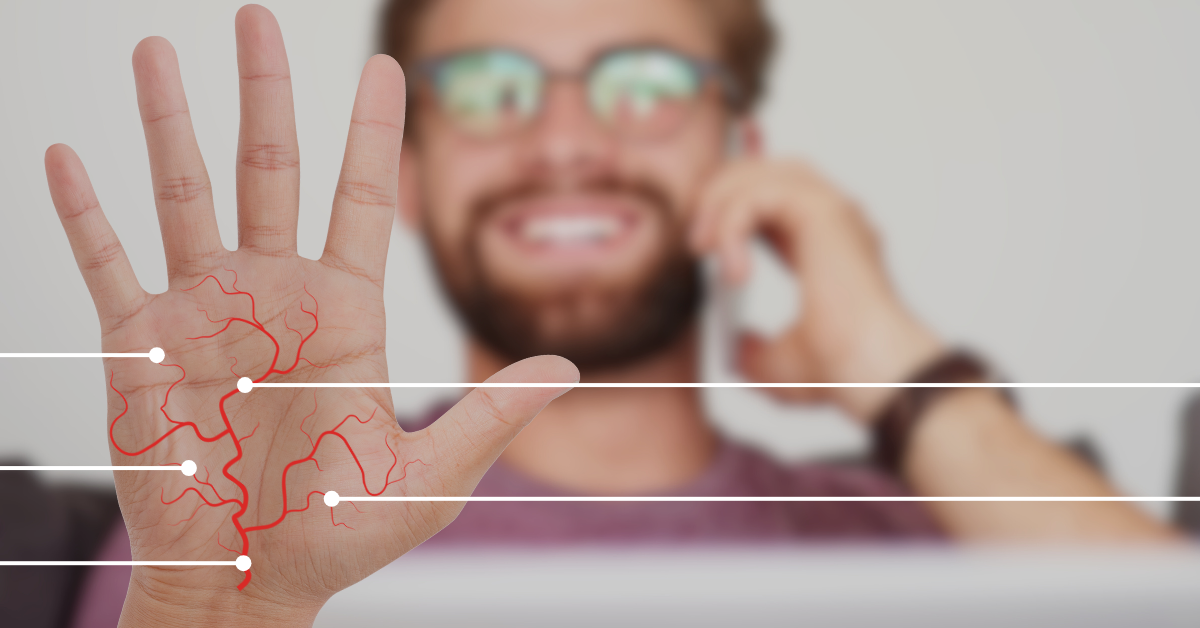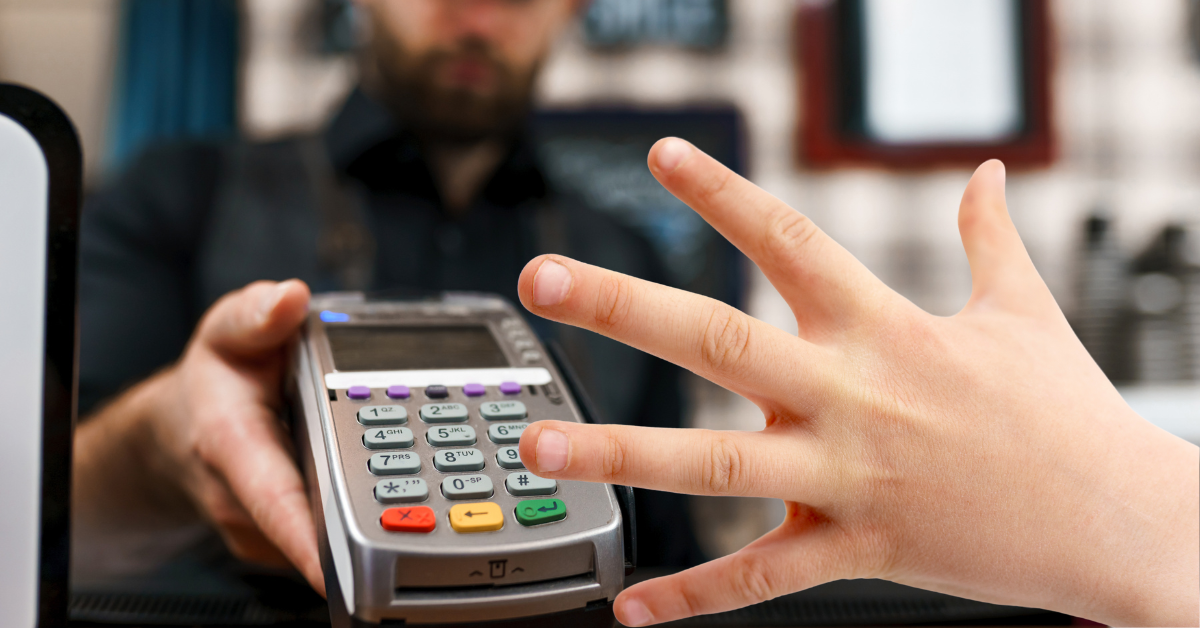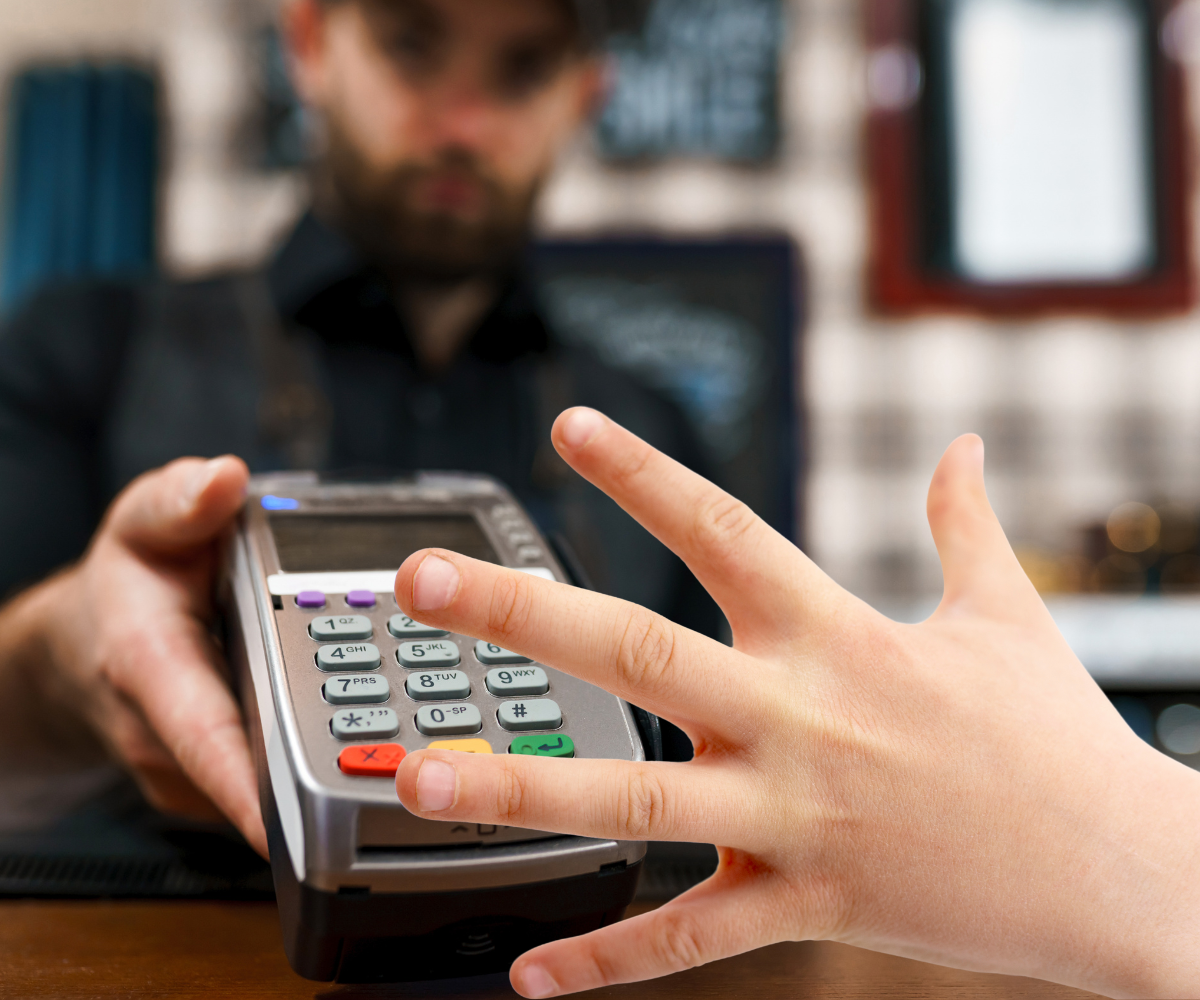Categories
Imagine this: you’re juggling grocery bags at the checkout, no wallet in sight, and with a quick wave of your palm over a scanner—voila, payment complete. Or you’re at the clinic, skipping the usual ID drill; a simple hover of your hand pulls up your medical file instantly. That’s the charm of palm vein scanning, a biometric marvel quietly stealing the spotlight.
While fingerprints and facial recognition hog the headlines, this underdog is winning fans with its seamless, secure vibe. So, why is palm vein scanning the talk of the town? Let’s dive into its magic.
At its heart, your palm vein patterns are your personal biometric signature, unique and tucked safely beneath your skin. Using infrared light, it maps the intricate web of veins in your palm, creating a pattern no one else can replicate. From safeguarding your money to protecting sensitive data, palm vein scanning feels like a trusty ally in a world craving both convenience and security.

Biometrics in 2025 are all about making life smoother and safer, and palm vein pattern recognition is leading the charge with its low-key brilliance. Sure, fingerprints are reliable, and facial recognition is flashy, but palm vein scanning? It’s the effortless friend who gets the job done. Industry reports predict the biometric market will soar, and palm vein scanning is carving out a niche in high-stakes settings like banks, hospitals, and offices.
What makes it stand out is its touchless nature. No need to press your hand on a grimy scanner—just hover and go. After years of germ-conscious living, this feature is a game-changer for everything from paying for coffee to accessing secure buildings. And with hackers getting craftier at spoofing fingerprints or faces, palm vein scanning’s internal vein map feels like a fortress. It’s like your hand is saying, “Only I’m the real deal.”
Let’s nerd out for a moment—The science behind palm vein pattern recognition, pivotal to palm vein scanning in healthcare, harnesses human biology, near-infrared (NIR) optics, and advanced algorithms to achieve highly secure and accurate identification. By emitting NIR light (700–900 nm), scanners penetrate the skin to capture the unique vascular patterns of deoxygenated blood in palm veins, which are absorbed by hemoglobin and imaged as a distinct grayscale pattern by a CCD sensor.
These patterns, unique even among identical twins and stable throughout life, are converted into encrypted digital templates with millions of data points, enabling rapid matching with a false acceptance rate below 0.0001%, ensuring reliable patient identification unaffected by external factors like skin conditions.
So, where’s palm vein scanning popping up? Imagine paying for your groceries with a wave of your hand. In places like Japan, it’s already happening at ATMs and retail counters—fast, secure, and a little futuristic. TechTrendz raved about how biometrics are reshaping shopping, and I’m ready to try it at my local market.
Then there’s access control. Think of a top-secret lab or corporate HQ where only authorized folks get in. With palm vein scanning, no keycards to lose or codes to forget—just a quick palm wave to unlock the door. It’s straight out of a thriller, but it’s real and keeping sensitive spaces secure.
Governments are all in, too, using it for things like national IDs, airport checks and patient check-ins at healthcare facilities. And in finance, it’s a fraud-buster, ensuring only you can access your funds. Palm Vein recognition is the ultimate multitasker for our fast-paced lives.


Biometrics can feel a bit intrusive, but palm vein tech keeps it chill. Since it’s all about your internal vein pattern, there’s no external data like photos or prints for snoops to steal. In 2025, when privacy is gold, that’s a huge relief. TechBit had a solid piece on how biometrics can respect your boundaries, and palm vein scanning is a star pupil.
It also aligns with strict regulations like GDPR. Companies can encrypt your vein data, ensuring it stays private. Whether you’re at a hospital or a bank, palm vein scanning whispers, “Your secrets are safe with me.”
What’s next for palm vein technology? I’m dreaming of a phone with a built-in scanner—unlocking it or paying for lunch with a palm wave would be next-level. Combining it with other biometrics like fingerprints could make security ironclad. Biometric Insider noted its growth in healthcare and retail payments, and I’m betting it’ll soon be your ticket to board a train or unlock your home in smart cities. It’s convenience with a side of trust.

Palm vein scanning may not be the loudest biometric tech, but, it’s winning me over with its quiet strength. It’s secure, private, and fits into my life like a glove. Whether I’m buying snacks, checking into a doctor’s visit, or keeping my data safe, it’s got my back. Curious to see it in action? Explore Gekonova’s palm vein scanning solutions—I’m pretty sure you’ll be as excited as I am.